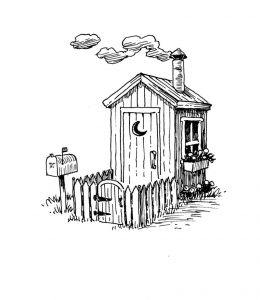Vauhini Vara at The Believer:
 And yet the most surprising aspect of the tiny-house phenomenon might be that, while the lifestyle has never been more visible, real-life tiny-house dwellers are hard to find. Fewer than ten thousand of the homes are estimated to exist nationwide. The impracticalities of tiny living—shoebox-sized sinks, closetless rooms—can be daunting, but it’s not only that. There are also legal obstacles. In most states, houses built on a foundation must be at least 400 square feet. To get around that, builders have taken to putting tiny houses on wheels and building them to the less restrictive codes that apply to RVs. But many states and cities bar RVs from being parked in one place year-round. Also, when you buy a tiny house, the house is all you get; you have to either buy the land to put it on, use someone else’s for free, or find a landlord willing to lease land to you.
And yet the most surprising aspect of the tiny-house phenomenon might be that, while the lifestyle has never been more visible, real-life tiny-house dwellers are hard to find. Fewer than ten thousand of the homes are estimated to exist nationwide. The impracticalities of tiny living—shoebox-sized sinks, closetless rooms—can be daunting, but it’s not only that. There are also legal obstacles. In most states, houses built on a foundation must be at least 400 square feet. To get around that, builders have taken to putting tiny houses on wheels and building them to the less restrictive codes that apply to RVs. But many states and cities bar RVs from being parked in one place year-round. Also, when you buy a tiny house, the house is all you get; you have to either buy the land to put it on, use someone else’s for free, or find a landlord willing to lease land to you.
Around the time of LaBarre and Fredell’s entrepreneurial gambit, the discrepancy between the realities of tiny living and its on-screen representations had generated a great deal of confusion. Inspired by HGTV and Pinterest, people would set out to buy tiny houses, only to learn that tiny living, in the real world, is supremely hard.
more here.
